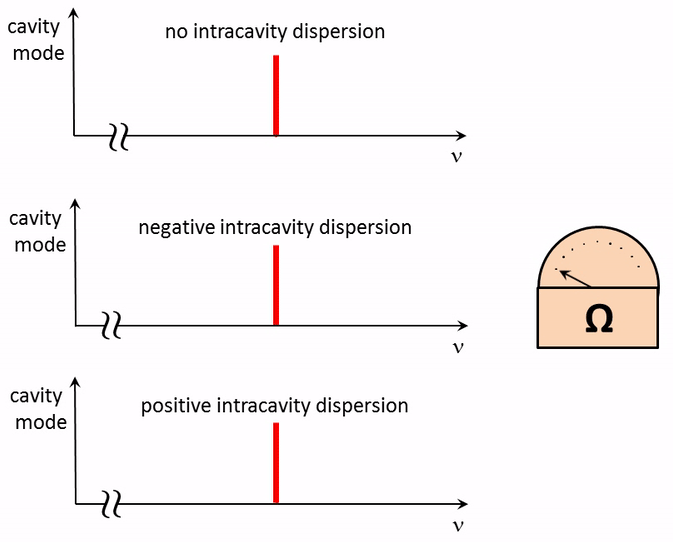(research in collaboration with Prof. Jean-Claude Diels, University of New Mexico, Albuquerque, NM)
Lately, in the
field of optical gyroscopes, we often hear about slow and fast light
gyros. This started with a theoretical paper in 2000
[1]; a recent paper offers an overview and extensive
references of theoretical research that has been done in this field
[2]. The conclusion of the latter paper is that dispersion
manipulation of passive gyros
(e.g. Fiber Optics Gyros, FOG) does not lead to any improvement in
performance, as it was originally suggested. In contrast,
for the active laser gyro (Ring
Laser Gyro, RLG), a steep anomalous dispersion results in an increase
in sensitivity. This enhancement in sensitivity will indeed be at the
expense of noise and dead band, if one considers only cw laser gyros,
as it was done in [2]. However, it was demonstrated that in
mode-locked operation, a ring laser gyro has no dead band if the pulse
crossing points are placed in a region that is free of backscattering
(air or ideally vacuum) [3]. More of that below.

Principle:
The above figure shows three ways to visualize, what is happening in a
rotating RLG. For simplification, a circular ring is assumed. A
clockwise (CW) and a counterclockwise (CCW) wave are generated. (c -
speed of light, R - radius, P - perimeter, A - area, λ=c/ν -
wavelength at rest, Ω - angular velocity of the RLG, Δν -
observed beat frequency)
- Left: The RLG is fixed
in the laboratory frame. Consequently, a standing wave forms, since
there is no difference in cavity lengths for the CW and the CCW
wave. An observer moving in the laboratory frame with a velocity RΩ
sees the fringes going by at a rate RΩ/(λ/2).
- Middle: The observer
sees the CW and CCW with different Doppler shift.
For this, it actually does not matter, if the observer moves or the
RLG rotates in the laboratory frame.
- Right: We consider CW and CCW wave starting at point A. During the cavity roundtrip time, Point A has moved to A'. This results in a difference ΔP for the cavity lengths that the two waves see. The standing wave condition leads to Δν/ν = ΔP/P.
Mode-locked
RLG: Using a mode-locked ring laser gyro has the following
advantages:
- For cw gyros, only inhomogeneously broadened gain media can be used to avoid gain competition leading to unidirectional operation or strong coupling between the two directions. In a pulsed RLG, if the pulses are not meeting in the gain medium, also homogeneously broadened media (solids) can be used.
- If the pulse crossing points are placed in a region
that is free of backscattering (air or ideally vacuum), the dead
band can be minimized or avoided. The shorter the pulses, the easier
it is to fulfill this condition.
